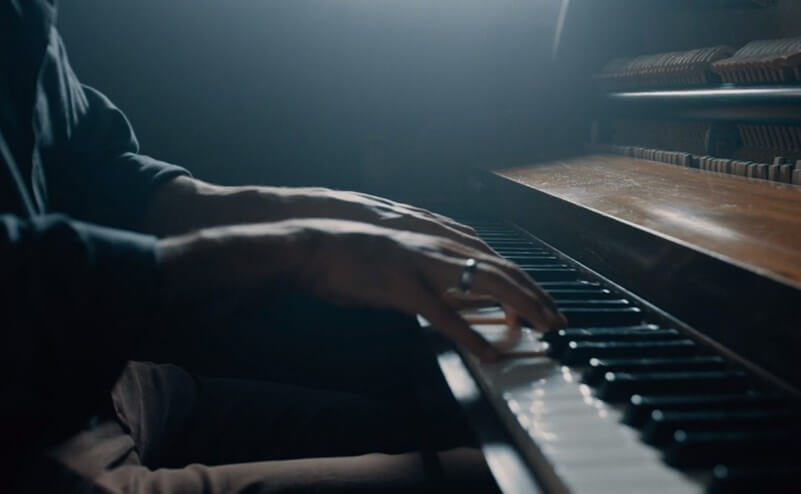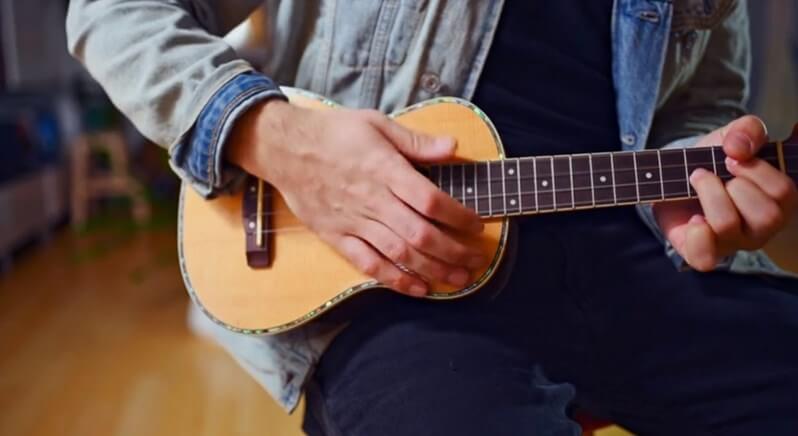Highlights
Table of Contents
Explore article topics
So you created a video for YouTube, Instagram, Facebook or wherever, and you want to use a song in it. Not so fast! You’ll first need to know if that song is copyrighted. If not, you risk getting a copyright strike and having your video or entire channel deleted.
But how to know if a song is copyrighted?
In this post, we will look at what copyright is exactly, what it means for you as a creator and how to check if a song is copyrighted.
Power your business's creativity with Artlist Business
What is copyrighted music?
A copyrighted piece of music is designed to protect the intellectual property of its creators by giving them and only them exclusive rights to use their work however they want. Everybody else needs to get permission, or a license, from the copyright holder to use their song, usually for a fee.
Is all music copyrighted?
Spoiler alert: Almost all music is copyrighted. But what matters most in terms of restrictions placed on that music is how you use it.
However, there are a few cases where a song or piece of music is copyright free:
1. Music in the public domain
Public domain music is music free to use by everyone without permission. There are a few criteria that make a piece of music fall under the public domain category:
- If the song was created before copyright existed (the first copyright act was created in Britain in 1710)
- If between 50 to 70 years have passed from the author’s death (depending on the country)
- Works created before 1978 whose copyright owners failed to renew their copyrights (which you can research at the U.S. Copyright Office). Be sure to search the Public Domain Information Project as well.

2. Music under Creative Commons licenses
Using music that falls under a Creative Commons license is free. However, there are certain restrictions and requirements you need to follow to use it correctly or you’ll be committing copyright infringement.
There are 6 different Creative Commons licenses, each with its own guidelines. Check them out here.
3. Royalty-free music
What exactly is royalty-free music? A royalty-free license eliminates the need to negotiate licensing fees with Performance Rights Organizations (PROs) and gives you the right to use copyrighted music any way you like.
Using royalty-free music is usually not free. However, you pay for the license only once (usually through a subscription to a platform like Artlist), and you can use that song.
Using licensed royalty-free music in your videos has many advantages over choosing songs in the public domain or under a Creative Commons license.
- The quality is much better
- You have much more variety
- The songs are more unique
Important tip: Make sure you read the license terms of the royalty-free platform you want to use, as all licenses were not created equal (more on that later on)
Remember, the use of copyrighted music requires a license. You could face legal trouble if you use it without permission.
When is it ok to use copyrighted music?
There are a few very specific instances where you can use copyrighted music and without committing copyright infringement:
- Personal use – if the video you’re making is for your personal use and you aren’t going to use it to make money, you’re home-free, and don’t need a license
- If you own the copyright to the song
- Fair use – if you use the video for educational purposes or to comment, criticize or parody a piece of music, you can do it without a license
Regarding the last point, It’s important to make sure you know what parody is. Car giant Honda, for example, got sued for copyright infringement by MGM in 1995 for using the James Bond brand without permission for their financial gain, while Honda claimed it was a parody and hence considered fair use.
The court rejected Honda’s fair use claim, asserting the video was not a parody of the James Bond brand, so make sure that what you are doing is parody. You can judge for yourself.
Apart from these situations, you need to ask permission from the copyright owner. But how can you check if a song is copyrighted? Here’s a simple step-by-step guide that will help you find out if a song is copyrighted, so you’ll know what you can and can’t do with it.
How to check if a song is copyrighted on YouTube
Since it’s the 2nd most popular site on the internet and the most popular video site, the first place you need to check to know if a song is copyrighted is YouTube.
The best way to find out if a song is copyrighted is by uploading it to YouTube and letting the Copyright Checker check if there are any copyright issues. Here’s how to do it:
- Log in to your YouTube account and then go to the YouTube Creator Studio
- Click CREATE in the top right corner of the page and then Upload videos
- Upload a video with the song whose copyright you want to check
- When YouTube has finished processing your video, click on Checks
- If a song is copyright-free, you’ll see “No issues found” under Copyright with a green checkmark on the right
- If the song is copyrighted, you’ll see a red exclamation mark near the Checks section
- When you click Check, you’ll see the copyright details
To learn more about music for YouTube, check out our post on how to find music for YouTube videos.
How to check if a song is copyrighted on Instagram and Facebook
Instagram and Facebook have automated systems that recognize if the song playing in the background of your video is subject to copyright. But you can’t find out if a song is copyrighted on Instagram or Facebook until you post your video. A warning will appear if there is an issue of copyright infringement. It will ask you to change your video’s background music to a song that isn’t copyrighted.
How to know if a song is copyrighted on Twitch
In the past, Twitch failed to enforce its own copyright rules, which forbid using uncopyrighted music in streams or highlight videos. The consequences of this failure were felt in 2020 when several high-profile users suddenly got copyright strikes and DMCA takedown warnings.
As a result, Twitch music rules became clearer, and the platform added its own library of Twitch-cleared music.
This means that the only music sources available to Twitch streamers are:
- Music in the public domain or Creative Commons.
- Songs from the Twitch music library
- Licensed royalty-free music.
Can I only use a portion of a song?
Even if you use a few seconds of a song without permission, you’re exposed to a copyright strike. It doesn’t mean it will happen, but it happens often. Automatic copyright checkers like on Instagram, Facebook and Twitch make the chances of you getting away with copyright infringement on IG or any other platform low. What’s more, the price you will pay for copyright infringement is significantly more dramatic than paying a licensing platform a monthly fee.
Can I use a cover of a popular song?

You still need a license. Once an artist releases their musical work, anybody can create and distribute their own recording of the work (a cover) as long as they are granted a mechanical license and pay a ‘mechanical royalty’ (currently 9.1¢ per copy of the song). You might need more than just a mechanical license, though. If you want to create a YouTube video of your cover and there’s potential for it to be widely seen, you’ll need a synchronization license, which covers the combination of the sound with a visual experience – your video.
What happens if I use copyrighted music without permission?
Most of the time, it’s not a matter of whether a song is copyrighted but a matter of understanding exactly what that copyright entails, or, in other words, how restrictive it is. YouTube shows all the restrictions, including whether playback is restricted in certain countries. Copyright owners can change their policy and take down all the videos containing those songs. If you use copyrighted music without a license, you can get a copyright strike. YouTube could block your video and mute its music. You may see a message like: “This video contains an audio track that has not been authorized by all copyright holders. The audio has been disabled.” If you did get permission to use the track and still see that kind of message, appeal the claim via your YouTube Dashboard.
The other restriction for using copyrighted music is that you cannot monetize the video yourself. The song may be considered “ad-supported music,” meaning the copyright holder may show and monetize ads in your YouTube video. You may lose out on making money from traffic and plays. That is why licensing royalty-free music is often the easiest and most trouble-free way to go.
Why you should use royalty-free music from Artlist
An Artlist subscription has several advantages over other royalty-free licenses out there:
- You get unlimited access to the music and SFX catalog and unlimited downloads
- The license lasts a lifetime, and you can use a song or sound as often as you want
- With the Music & SFX Pro plan, you’re covered for every type of video, even commercial
- The new Music & SFX Social plan offers a very affordable rate for social creators (starting at $9.99 per month) as well as a monthly payment option ($14.99 per month).
- At Artlist, you’ll find music from some of the world’s best indie artists
- It’s easy to search for the right song for your video by search filters, themed music, and SFX collections
- The Artlist Max bundles give you everything you need to create videos – from music and SFX to templates and footage, plugins and software
In short, Artlist takes the complication out of music licensing by offering direct and unlimited access to an entire catalog of high-quality music for a single subscription fee.
Wrap up
Hopefully, this helped you get a sense of how to know if a song is copyrighted. Remember to be smart and play by the rules. Do your homework to find out if your video soundtrack is on the up and up. If you want peace of mind, your best option is to use royalty-free music. It’s the best way to be professional and put your best foot forward as a filmmaker.
Get everything you need to create the perfect video
Jessica Peterson is a travel and documentary filmmaker with a background in journalism and marketing. She runs Purple Noon Productions from sunny Los Angeles. She has 20 years of experience producing content in 114 cities and 25 countries. In 2016, she directed and produced her own documentary about her then-home of Guam. Her clients include CNN, United Airlines, Southwest Airlines, Matador Network, and Tastemade.
Share this article
Did you find this article useful?
Related Posts
- By Artlist
- 9 MIN READ
- By Artlist
- 7 MIN READ
- By Jessica Peterson
- 9 MIN READ
Latest Posts
- 25 Apr
- By Josh Edwards
- 4 MIN READ
